Notre Dame de Lourdes (known in Turkish as the Bomonti Gürcü Katolik Kilisesi) is a Georgian Catholic church in the Feriköy neighborhood of Istanbul. Most Georgians being Orthodox Christians, there are not many Georgian Catholic churches in the world. Further, there were never many Georgians in Istanbul, and there are very few today. Thus the very existence of this church is twice surprising. Its continued use is also surprising. Most sources report that the congregation today is largely made up of Turks, though when I went to see the church I found an amicable group of Georgians inside.
The church was built in 1861 and extensively renovated in 1901. For further details on the church, as well as its place within the history of Georgian Catholicism, see this recent paper by Natia Natsvlishvili. It’s a very nice essay, and I don’t have much to add to it, so this post will contain mostly pictures of the church along with some comments.
For readers of this blog, I imagine, the most interesting parts of Notre Dame de Lourdes are its Georgian inscriptions. Several of them are multilingual, featuring Turkish, French, or Latin alongside the Georgian. My favorite is this list of head priests (Turkish: başrahipler), which gives names in Georgian and French transliteration.
There is also a lovely Latin-Georgian gravestone for the founder of the church. That priest’s name is not consistent across these two texts: the list of names has ხარისჯარანთი, while the gravestone has ხარიჩარიანთი. Needless to say, there is not a lot of consistency when it comes to transliterating his name(s).
[By the way, note also that the list of priests mentions someone named “Batmanachvili”(ბათმანაშვილი). There is some confusion as to whether this priest was named “Batmanashvili” or “Batmalashvili”; my guess is that this is due to a typographical error in a book about Soviet Catholics.]
My favorite area of the church is this little cave-shrine to Mary, with its French arch above its Georgian altar.
I didn’t get all of the Georgian text of the altar in my photos. Natsvlisvhili says that it reads, “Mary the Mother of God, the Apostle of Iberia, protect us sinful Georgians.”
Because the church is Georgian, it naturally displays a painting of St. Nino. According to Natsvlishvili, Georgian Catholics “consider the saint as “theirs” if she is depicted either in
traditional Georgian dress or in “French” clothing, i.e. the clothing typical for Catholic saints. Therefore, the saint has to look either like a Georgian, or like a Catholic in general to satisfy either the national or the religious feelings of the believers. “Greek” (Orthodox, Byzantine) iconography is unacceptable from both points of view. Saint Nino depicted according to this iconography is alien to Georgian Catholics.”
Curiously, the main altar of the church displays an icon of Mary with a Polish inscription. Natsvlishvili says that she doesn’t know how it got there, and I certainly don’t know either. The inscription reads “Pod Twoją obronę uciekamy się”, “Beneath Thy Protection”, a standard prayer to Mary.
In one of the back rooms is an old tapestry depicting Jesus’s burial (or something). Somebody told me that the writing is in Old Church Slavonic.
Most of the more quotidian writing in the church is in Turkish, including the flyers on the pews and the books on the lecterns.
In another of the back rooms is a little Turkish-language shrine to St. Rita of Cascia. Note the red mark on Rita’s forehead; according to legend,
Sister Rita had a great devotion to the Passion of Christ. “Please let me suffer like you, Divine Saviour,” she said one day, and suddenly one of the thorns from the crucifix struck her on the forehead. It left a deep wound which did not heal and which caused her much suffering for the rest of her life.
There is even a little bit of English to be found in the garden: someone scrawled “FATHER ANTON(I)AZ(I)” into the cement under a gate. I don’t know who this is. Natsvlishvili relates the story of a “Father Antony, who had serious health problems and spent a whole month at the hospital in Istanbul, where he was never visited by the [church] superior. After returning to the monastery Father Antony’s health become worse and he asked for a doctor, but nobody paid any attention to him.” Perhaps this is the same priest?
On the street-facing exterior wall of the church there is a sign reading “N.D. DE LOURDES EGLISE GEORGIENNE F. 1861 R. 1901”. At the time of my visit, someone had spray-painted the word “Allah” below it.
I have more pictures, but I don’t feel like putting them in photo-essay form. Instead, I’ve dumped them all into two galleries. Rather than grouping them thematically, I’ve grouped the pictures by author credit: one gallery features pictures I took, the other has pictures I took from Wikipedia (plus one I clipped from Natsvlishvili’s paper).
In the first gallery we have 1) the sign from the church’s front gate, 2) a prayer card in French, 3) a list of mostly Armenian names (onera missarum perpetua?), 4) a cabinet displaying a Georgian Bible and a Georgian flag, 5) a tall shot of the front of the church, 6) the interior of the church shot from above, 7) the interior of the church shot from below, and 8) the sign from the church library and archive building next door.
In the second gallery we have four old pictures of the church (the first of which is from Natsvlishvili’s paper), two prayer cards, three priests’ business cards, and some kind of Ottoman-era building permit. (All of these pictures have been edited by me, since the originals were dull and blurry.)

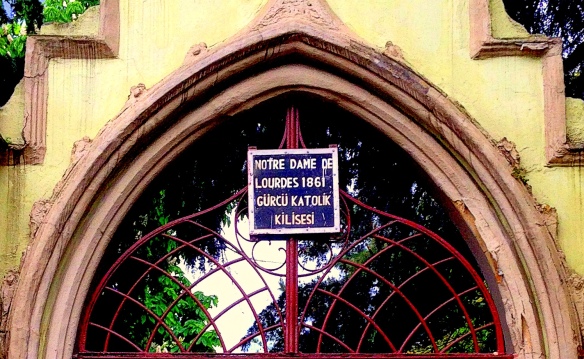
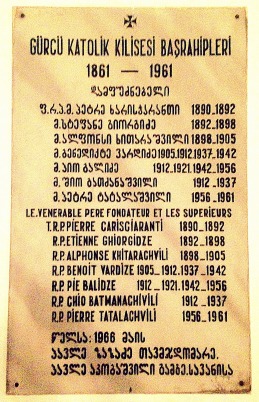
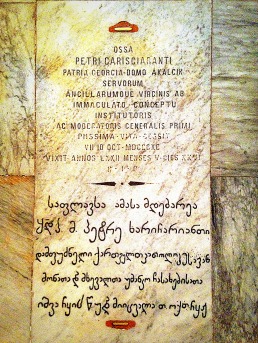


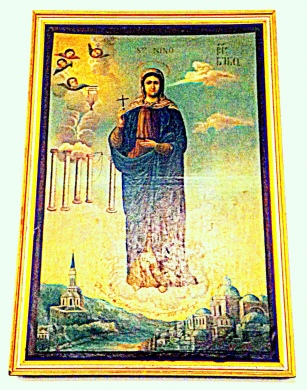

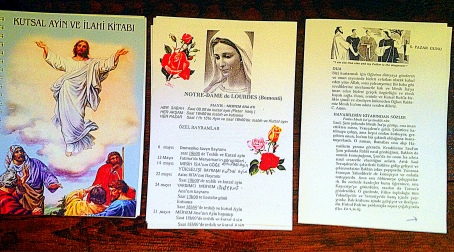
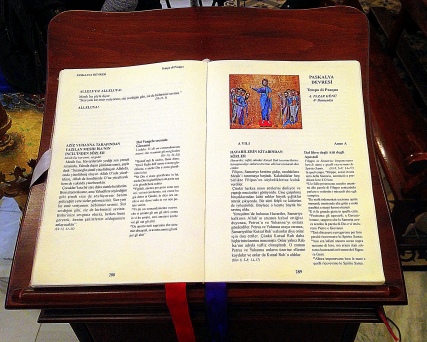
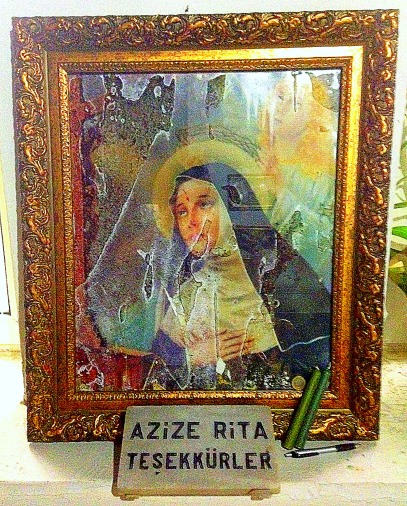
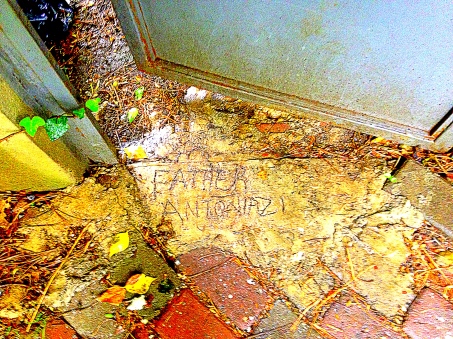


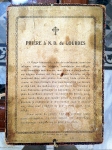

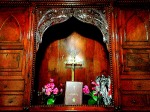
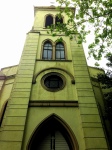
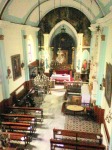

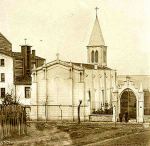









Any chances of a series of posts on some of the odder churches of Istanbul?
Most of the churches (converted into mosques or not) in Istanbul are Greek, which really isn’t all that related to Georgia. Maybe I could look at some Armenian churches. I think there’s a Armenian graveyard somewhere. That might be interesting.
However, I’m thinking about taking a trip to the Trabzon area, which is replete with Georgian and Armenian churches and ruins.
The last one isn’t a building permit but a lottery ticket in support of the rebuilding of the Notre Dame of Lourdes church in Feriköy, Istanbul: http://upload.wikimedia.org/wikipedia/commons/f/f3/Notre_Dame_de_Lourdes_Georgian_Church_in_Constantinople.jpg
Yeah, I couldn’t figure out exactly what it was. But what does “lottery” mean in that context? Like a raffle fundraiser?
Yes, that’s correct. A raffle to get money for a building project.
Hey, great things here. I love history, so I am sort of a historian ”pig”. I mean what ever nation’s history I found, it is always a pleasure to read!
I have notice an, probably deliberately, incorrect information about the Cyrillic alphabet.
You might be bitter to some Russian government, but insulting Bulgarian Orthodox saints is not very polite. And hope you would like to know, that the Cyrillic or Кирилица has been invented in the 9th century, First Bulgarian empire 🙂 Long live!
What “incorrect information” are you talking about?
Pingback: Religion in Istanbul: Mosques, Churches, Cemeteries, Cats | georgiasomethingyouknowwhatever
Me momtsons tkveni article, gmadlobt batono!
Chok teshekkerler!
Pingback: Armenian Stuff in Buenos Aires | georgiasomethingyouknowwhatever
Hi there, what an interesting article about the Georgian church in Istanbul. Thank you. As it happens I am researching my Polish ancestry in Istanbul and recently learned that a friend of my Great Grandmother’s family (her Godfather in fact) was Joseph Ratynski, another Polish exile and an architect. He built Casa Italia in Pera, restored the former house of Adam Michievich (now Polish museum) and apparently built the altar piece for this Georgian church, so I think that must answer your query about why there is a Polish piece there.
What a coincidence: I’ve actually been to that museum! Strangely, it’s located in Tarlabashi, the most decrepit slum in all of Istanbul (the museum’s Wikipedia page doesn’t mention that). See https://georgiasomethingyouknowwhatever.wordpress.com/2015/08/04/religion-in-istanbul-mosques-churches-cemeteries-cats/#tarlabashi
I thought I had some pictures of the museum, but I can’t find them at the moment.
Pingback: Polish Exiles in Istanbul: Living with the Levantines – From Lancs to the Levant
It has taken me ages to finally pull together my Blog piece on the Polish exiles in Istanbul but here it is at last and many thanks for permission to use your photo of the altar piece. I have included a link back to this page: https://lancstolevant.wordpress.com/2018/02/09/polish-exiles-in-istanbul-living-with-the-levantines/?fb_action_ids=10204278967370737&fb_action_types=news.publishes&fb_source=og_snowlift_photo_robotext
Great post! You mention that the Mickiewicz museum is permanently closed — where did you hear that? Was it closed recently? I was there just a few years ago.
Well that’s interesting. You’ve made me doubt myself now. One of the links I found to the museum had a line saying “permanently closed” (maybe TripAdvisor?) but I’ve done another search online and can’t find it or any other site saying it’s closed. I’m going to Istanbul soon and had hoped to visit it so if it is still open I shall let you know!
Let me know how that goes. It’s in what is now quite a rough neighborhood, so be careful.
Angela, nice to meet you here too! Let us know please about the Mickiewicz Museum: I wrote to the Polish Embassy in Ankara (the Consulate in Istanbul has not an e-mail) but no answer.
About the Church the altar Matki Boskiej Częestochowskiej (of Our Lady of Czestokowa) was built in 1861 by Józef Ratyński as says “Polski Słownik Biograficzny” vol. 30.
The Polish text under the image of the Virgin is “Pod Twoją obronę uciekamy się” in English “Under your mercy (literally patronage) we take refuge” from Latin prayer “Sub tuum praesidium confugimus”.
I did not get time to find the Mickiewicz Museum this visit but I hope to return next year so will let you know.
Hi. Mickiewicz museum is still open and running. Do not always trust what Google says. Btw – very interesting post especially about Polish painting in the church. I got some clues and found some documents how it got there. I will share with you about that.
Drogi Andrzeju!
Many thanks for you answer to Angela and me. For the link between the Georgian church and the Mickiewicz Museum I have an image from “Kłosy“ (1883). The caption says “Dom Ratyńskiego, przy ulicy Adama na Perze w Konstantynopolu, wzniesiony na zgliszczu tego, w którym umarł A. Mickiewicz.“ (House of Ratyński, on Adam Street in Pera, Constantinople, erected on the ruin of the one in which A Mickiewicz died).
All the best
Can I share this photos on my page?
Sure, if it’s non-commercial and non-political. Just post a link back here and also post a link here to your site.